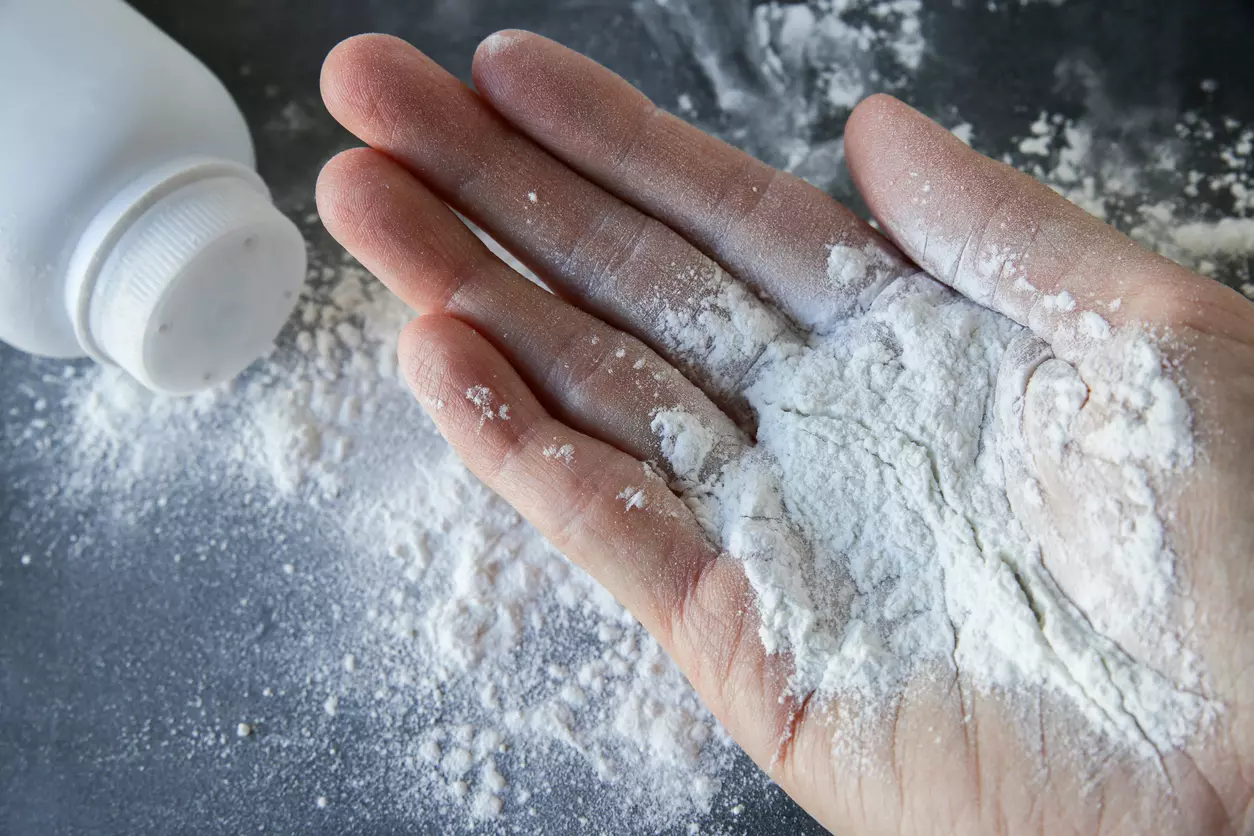
Talcum powder on hands. Representational image: iStock
Explained: Why WHO thinks talcum powder may cause cancer
The ‘probably carcinogenic’ classification is the second-highest level of certainty that a substance can cause cancer. Talc was earlier classified as a ‘possible carcinogen’

Talc has been classified as “probably carcinogenic” to humans by the World Health Organization’s (WHO) cancer agency on July 5.
The International Agency for Research on Cancer (IARC) published the findings of a group of 29 scientists from 13 nations in The Lancet Oncology after a meeting in Lyon, France last week.
What’s significance of classification?
The “probably carcinogenic” classification of WHO is the second-highest level of certainty that a substance can cause cancer.
Talc was previously classified as a “possible carcinogen”.
IARC, in a press release, said, “After thoroughly reviewing the available scientific literature, the Working Group of 29 international experts classified talc as probably carcinogenic to humans (Group 2A) on the basis of a limited evidence for cancer in humans (ovarian cancer), sufficient evidence for cancer in experimental animals, and strong mechanistic evidence that talc exhibits key characteristics of carcinogens in human primary cells and experimental systems.”
The Group 2A classification is the second-highest level of certainty that a substance can cause cancer.
What were their conclusions based on?
The group of experts said their conclusions were based on several studies that showed an increased risk of ovarian cancer in women who use talcum powder in the genital area.
However, they said a causal link could not be fully established because though the evaluation focused on talc not containing asbestos, contamination of talc with asbestos could not be excluded in most of the studies of exposed humans.
They also clarified that biases in how talc use was reported in the studies could not be ruled out with reasonable confidence.
What are concerns about asbestos contamination?
Asbestos is a known carcinogen when inhaled.
Talc and asbestos are naturally-occurring minerals found in close proximity to each other in the earth.
Due to this close association during their formation, it is likely that talc could be contaminated by asbestos when it is mined and processed.
In fact, a note published by the US Food and Drug Administration (FDA) in April mentioned that there have been concerns about asbestos contamination in talc products since the 1970s.
The American multinational pharmaceutical company Johnson & Johnson is fighting thousands of lawsuits in the US on the allegation that their talcum powder products are contaminated with asbestos.
What did IARC's study focus on?
The cancer agency’s focus was to find out whether talc by itself is carcinogenic or not.
IARC however admitted that “contamination of talc with asbestos could not be excluded in most of the studies”.
Is the new classification definitive?
There are other experts who believe that there is a lot of uncertainty on whether talc is definitely carcinogenic to humans.
One of them, Kevin McConway, emeritus professor of applied statistics at the Open University in the UK, said in a statement that when IARC classifies a substance, it does not say anything specifically about whether exposure to the substance does increase the risk of cancer in humans. Instead, they try to answer the question of whether the substance has “the potential to cause cancer under some conditions, which they do not specify”.
Another expert was of the opinion that even if the observed link was causal, the associated risk would be very small.
What is talc?
Talc, a naturally occurring mineral, is mined in many regions worldwide. Exposure to talc occurs in occupational settings during the mining and milling or processing of talc, or during the production of talc-containing products. General population exposure through the use of talc-containing cosmetics and body powders is best documented; however, exposure through food, drugs, and other consumer products is likely, although less well documented, said IARC.
Because of the challenges of accurate measurement, contamination of talc with asbestos may still be a concern and may lead to exposure of workers and the general population to asbestos (e.g. via contaminated talc-based make-up and body powder), it added.
Here is the IARC press release

